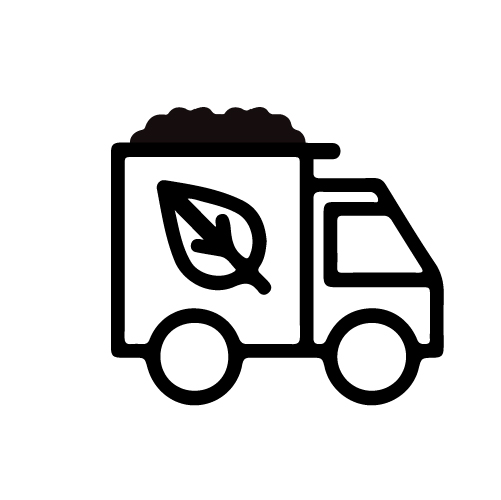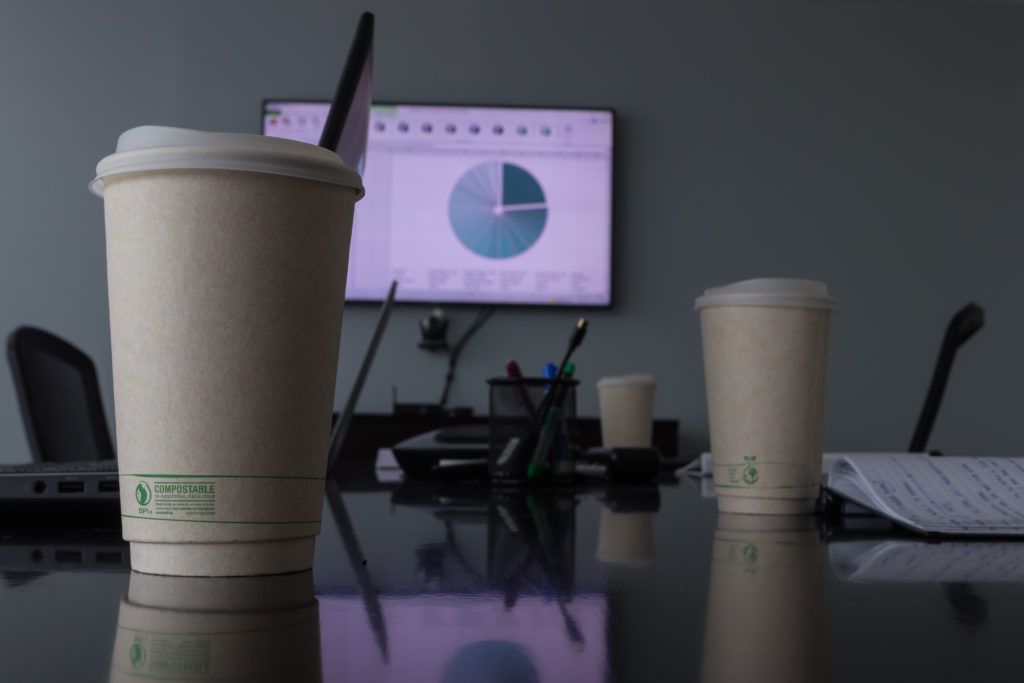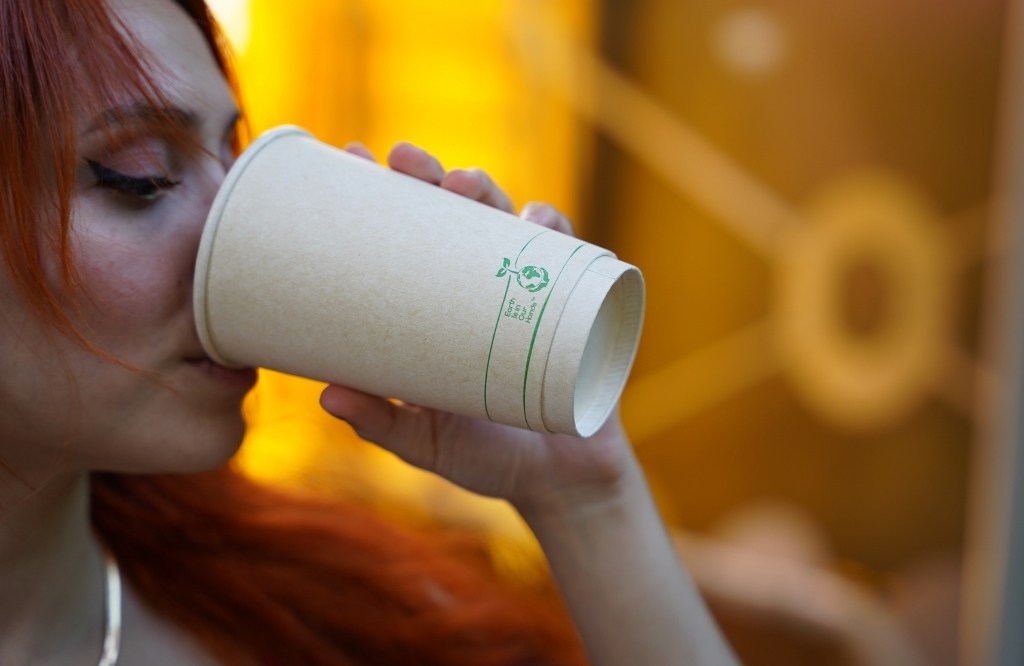Compostability will help us reach a more balanced relationship with nature.
Living Balance Composting Fundamentals
Composting fundamentals
Life Cycle of Compostable Products:

It all starts with Bagasse: the plant material left over after Sugar Cane is processes for Sugar.

Then, the Bagasse is treated into long sheets of cardboard used to make the outer layer of the cup. The inner layer is coated with PLA (a compostable plant oil) to make it liquid-resistant.

After using it, and properly dispose of it in a compost bin, the cups are taken to an industrial composting facility.

In a humidity and temperature-controlled environment, the cups start to decompose, and completely transform into rich fertilizer in roughly 6 months.

This Compost is taken in the form of organic matter to agricultural sites, and is used to provide nutrients to sugar cane fields and other crops.

The Cycle starts over as the Sugar Cane is processed, and its Bagasse used to produce more cups. This creates a sustainable, earth-friendly process.

It all starts with Bagasse: the plant material left over after Sugar Cane is processed for Sugar.

Then, the Bagasse is treated into long sheets of cardboard used to make the outer layer of the cup. The inner layer is coated with PLA (a compostable plant oil) to make it liquid-resistant.

After using it, and properly dispose of it in a compost bin, the cups are taken to an industrial composting facility.

In a humidity and temperature-controlled environment, the cups start to decompose, and completely transform into rich fertilizer in roughly 6 months.

This Compost is taken in the form of organic matter to agricultural sites, and is used to provide nutrients to sugar cane fields and other crops.

The Cycle starts over as the Sugar Cane is processed, and its Bagasse used to produce more cups. This creates a sustainable, earth-friendly process.
Composting Fundamentals

Do you know the difference between Biodegradable and Compostable? Learn the difference between this to terms and the science behind the composting process.
Biodegradable vs Compostable
Biodegradable means that a product can be turned to something smaller through a biological process. This could be that bacteria or fungi eat them away and turn them into gases, water, among other biological sub-products. Usually, anything that is plant-based, animal-based or natural mineral-based is biodegradable. Some things can take a lot of time to change, for example, plastics are biodegradable, but, it could take decades or even centuries to naturally break down.
Compostable means it can go through a much faster and controlled biological process that will turn products into rich soil with nutrients for many uses. It is like creating a natural fertilizer with the stuff we throw away. As it is a controlled biological decomposition process, it will take less time, approximately 60 days to 80 days.
What happens in the composting process
Composting is an aerobic process, this means that high temperatures (above 70 F) and oxygen are needed to keep bacteria that decompose organic matter alive. Bacteria attack the organic waste, such as the PLA coating from our cups and turn it into lactic acid. Microorganisms consume the smaller polymer fragments, lactic acid, and other organic byproducts as an energy source and the end result of the process is carbon dioxide, water, and some hummus. The final product of composting is rich in organic matter and improves the soil structure through its enrichment with humic substances.
Current State of the Disposable Goods Industry

Composting is a great strategy to reduce climate change, learn more about our current state and what composting can do for us. Here are some facts:

Composting avoids the production of methane, one of the biggest threats of Climate Change

The U.S produces the highest average amount of waste per capita: 2.24 kilograms per day.

28% of the waste we produce is food and greens, while the next 28% is paper and cardboard, which are materials that can be composted.

Americans landfilled or incinerated over 50 million tons of compostable waste in 2015.

Less than 1 percent of the waste sent to landfills is actually composted.

There are 185 full-scale food waste composting facilities in the U.S.

Approximately 53 facilities take BPI Certified compostable bioplastic products.

Composting could reduce the amount of trash sent to landfills and incinerators in the U.S. by at least 30 percent.

The microbes found in compost are also able to degrade hydrocarbons. Compost is being used in bioremediation of petroleum contaminated soils.

The heat produced while composting can be used to heat water contributing to domestic hot water demand.

The United States is responsible for about 0.11 metric tons of plastic in the ocean.
Start Making a Positive Impact

The future of earth is in our hands. Learn more about what you can do to make a positive impact by following these simple steps:

Choose compostable products
They are made from plant-based raw materials such as sugar cane and corn, which is an alternative to using petroleum based products.

Ask businesses to use compostable containers and cutlery
Utensils can break down completely, leaving no trace of pollution behind and being completely environmentally friendly.

Spread the word about composting
Advocating helps to develop model legislation and regulations for states and regulators..

Ask your Mayor for convenient and affordable curbside food waste collection systems
Curbside waste collection systems can save disposal costs

Use reusable straws
Most straws end up in our oceans and continually break down into smaller pieces that affect marine life.

Start composting organic waste and wood trimmings at home
Start a compost pile to keep your food scraps from going to the landfill.


